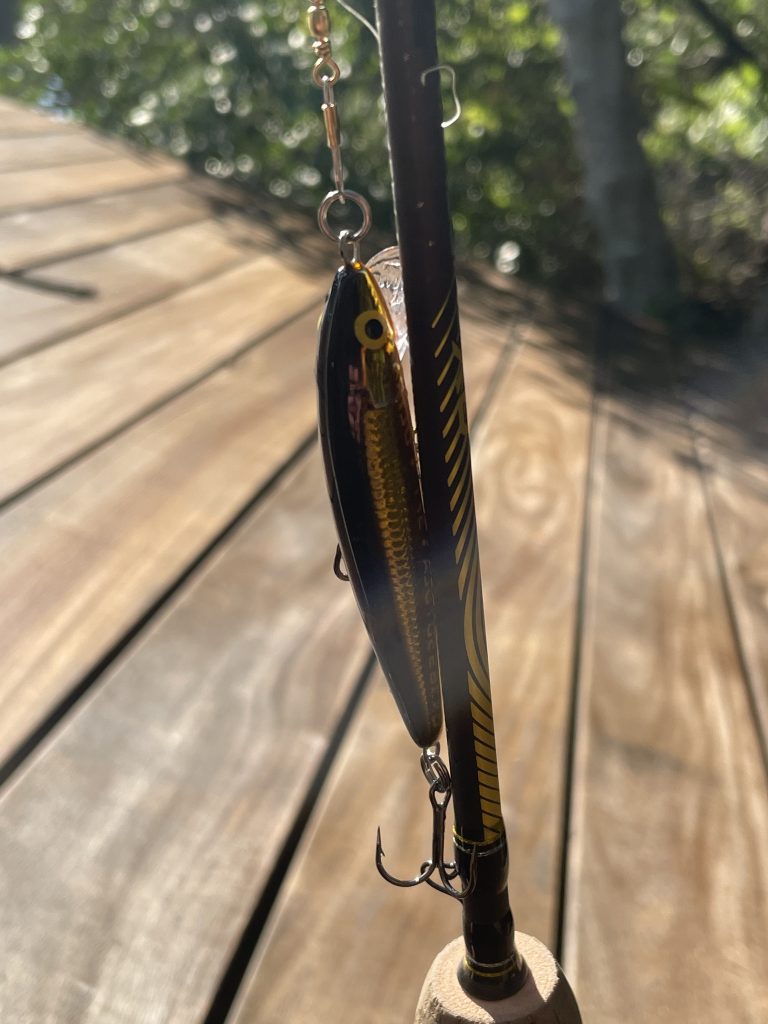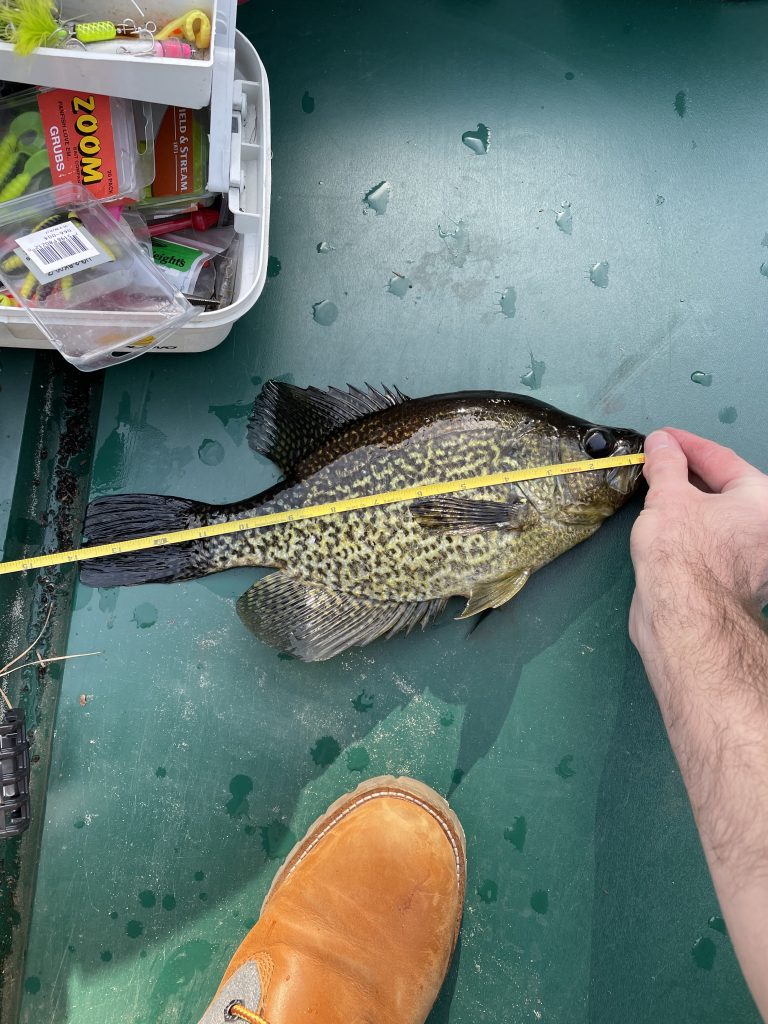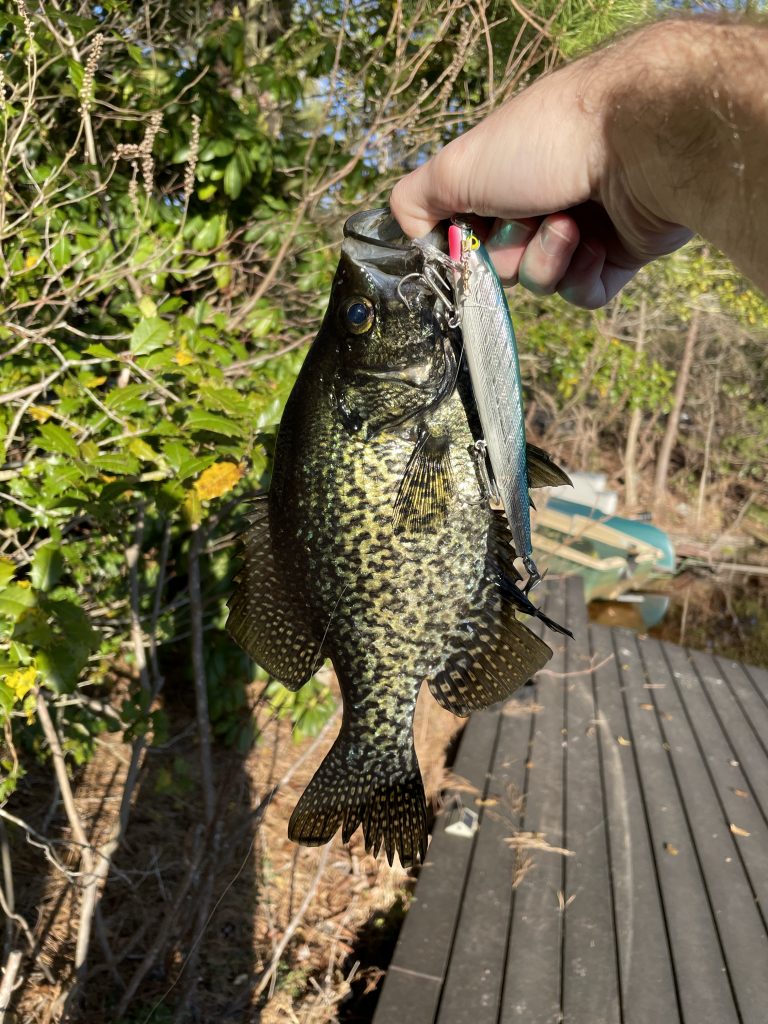
One of my popular posts has to deal with how to tune a fishing lure (such as, specifically a Rapala). Rapalas are, along with Bombers and Rebels, some of the most popular and effective hardbaits for freshwater species in a wide variety of habitats, but that little tidbit notwithstanding, I had no idea what sort of search volume “how to use a Rapala lure” would generate.
Nonetheless, Google Search Console tells all, and now the mysteries of the water are laid bare to me. That is your boon, since I can now answer the question. The netizens have asked, and I am here to answer.
Fortunately, I have no small share of experience fishing Rapala lures, so I consider myself as capable as any freshwater fisherman of answering the question “how to use a Rapala lure.” Many of my memorable catches have come to them, and to be sure, Rapalas are among my favorite freshwater lures, especially for warmwater species.
However, I’m going to diverge slightly from the crowd in this post. Most of the other popular articles on “how to fish a Rapala lure” address terminal tackle, color, and how to tie your lure into your line. They’re also hung up on the Rapala Original Floater, which, despite the fact that it is one of the most iconic lures of all time, is not my favorite.
No, here I’m going to focus on how to use a Rapala lure known as a Husky Jerk, which is available in a very wide range of patterns and sizes, and which is among the most versatile of all the lures in the Rapala catalog.
I’m also going to – forgive me – assume you know how to tie a Rapala knot or attach a swivel to the end of your line or leader. Fortunately, that will free me to discuss the actual technique associated with how to use a Rapala lure.
So, let’s get into the details.
Why This Rapala Lure?

Specifically, I’m going to talk about the Husky Jerk 7, also known as the HJ7, which is available in a wide range of other sizes, although all of the sizes behave pretty similarly. My favorite two patterns are Yellow Perch and Gold, although it’s available in many others and I have Blue/Black, Blue/Silver, Baby Bass, and Tennessee Shad in my boxes as well, among others.
Why this lure, when every other Rapala blog (more or less) is focusing on the Original Floater (OF)?
Well, in a word, it all boils down to versatility. The Husky Jerk, as a pattern, not as a specific size or color, can do everything that OF can do and many things it can’t do. In fact, the only thing the HJ can’t do that another Rapala can do is jig vertically, and to tell the truth, if you jury rigged a split shot on your leader, you could do that too.
So, in a word, the Husky Jerk can be used as a top water (albeit cumbersomely), it dives naturally, it can be rigged with a weight leader to get down to any depth, and it can be worked in any part of the water column.
The most important part, though, is that the Rapala Husky Jerk is a neutral buoyancy lure, which means it can be used for both slow and fast presentations nearly anywhere in the water column and it can be persuaded to stay there, which is very difficult to accomplish with other lures. Sinking lures sink and buoyant lures rise out of the strike zone very rapidly. The Husky Jerk does not suffer from this deficiency.
That said, here are some of the best techniques you can use that will show you most everything you need to know about how to use a Rapala lure.
Technique 1: The Slow Twitch, Topwater

One of the most interesting thing about the Husky Jerk (which by the way, is a diving lure) is that it can be used as a topwater – although this is not a particularly effective technique. Still, it’s worth a try if nothing else is producing.
Cast your Husky Jerk to create a presentation, and then very gingerly twitch it. Don’t jerk it towards you or it will dive and you won’t be able to get it back to the surface since it has neutral buoyancy.
Just make sure you don’t put it on a swivel or any other sort of terminal tackle because that will drag the lure down in the water.
Give it a few twitches like you’re fishing a wakebait or a floating stickbait and see what comes to you. This technique is relatively effective for panfish and chain pickerel but not particularly effective on bass. Nonetheless, it’s worth a try
Technique 2: Just Beneath the Surface

Slow fishing a Rapala just beneath the surface is another potentially effective technique for a Husky Jerk.
Cast the lure towards structure to make your presentation and let the lure sit there for a few seconds. Sometimes waiting tantalizes the fish and convinces them to strike before you even begin your retrieve.
If that doesn’t work, give the lure just a few short twitches toward the boat to get it just beneath the surface, where it will suspend.
Let it sit for two to three seconds between each twitch and be very gently with them. If you tug on the lure too quickly, it will dive, which can pull it out of the strike zone. With a little practice, you can perfect this technique which will keep the lure anywhere between one and three inches beneath the surface.
I have heard the best way to go about a slow fishing technique is to impart some motion, then wait for as long as you can tolerate. Then wait another few seconds. Often, the last bit of concentrated effort will be too much for a nearby predator, which will swoop out from the shadows and inhale the plug. Try it if you don’t believe it.
This technique is effective on all freshwater gamefish which I have targeted with it.
Technique 3: The Fast Jerk
This technique is very like the previous one except you’ll be jerking the lure near constantly. Cast to structure, wait a few seconds to see if the initial presentation can draw out any lurkers, then give your rod tip a few short raps to get it down beneath the surface.
Once you’ve started this technique, you want to adopt a pretty fast cadence. Don’t let the lure sit motionless for too long. Keep the rod twitching nearly constantly, but give a lot of very short periodic pauses.
This constant motion in the water creates a big disturbance and a lot of noise which will definitely get the attention of nearby fish, whether or not they strike.
This technique is better for fish that are aggressive and not skittish. The constant motion gets their attention and the frequent pauses convince them of two things: one, that the bait is dying, and therefore a viable target, and two, that if they don’t strike, they will miss their window of opportunity for an easy meal.
When fish are cooperative, this is hands down one of the most effective ways to fish a diving plus like a Rapala Husky Jerk. I’ve probably caught upwards of 50% of fish (that I’ve caught on Rapalas) using this technique.
Technique 4: Get Deep and Take Long Pauses (Good for Hot and Cold Water)

This technique is similar to the second one mentioned except you’ll want to work the Husky Jerk deep instead of shallow.
Cast to structure, give your reel handle a few steady ranks to get the lure down to depth (which for an HJ 7 will be somewhere around 2 to 5 feet, depending on how aggressive you are) then give it a nice long pause. Same rule applies here. Wait as long as you can comfortably wait and then wait a few seconds longer.
Give your lure a long pause, and then a sharp but short pause. Let it sit for a second or two more and repeat the process. What you’ll want to do here is keep the lure deep while giving it short, sharp taps and letting it sit for a while.
Longer pauses will entice fish in the area and your short taps will add vibrations you’ll need to get them in the vicinity.
This technique is one of the most effective Rapala techniques for both very hot and very cold water, when fish are sluggish and don’t want to react aggressively, even in reaction to bait.
Technique 4: Slow and Steady (Not Recommended, but Does Produce When Some Other Presentations Fail)
Full disclosure here: this is a particularly ineffective Rapala technique. I hardly ever use it, but in the spirit of fairness, if I’m going to write a blog about how to fish a Rapala lure, I have to cover it.
Send your lure out in front of cover or just past it, let it sit a moment and then begin a slow, steady retrieve. Bring it past structure at a steady pace and you might be lucky enough to elicit a strike.
In my experience, this straight retrieve (like most straight retrieves) lacks the maddening, enticing variability that convinced fish to strike.
Still, if you’ve used the other techniques mentioned here and none of them is working, it’s worth trying a slow, steady retrieve before you box the lures, stow the rod and head back to port.
Technique 5: Burn It
Finally, I have one more suggestion on how to fish a Rapala lure that is (in my experience) more effective than the slow, steady retrieve, although just marginally.
Cast your Rapala to or just past structure, let it sit a moment, and then rip it in. Don’t overdo it, because if you really rip a plug like a Rapala it will have a tendency to spin or spiral back to the boat instead of running true. This will do nothing but induce line twist and will not likely help your catch rate. Don’t get me wrong, fish will strike fouled lures, but not with routine vigor.
So anyway, cast your Rapala by structure and run it by it fairly swiftly but not so fast that the lure spins or fouls. This retrieve, which is more aggressive than the slow, steady retrieve, tends to draw strikes with about the same consistency as a spinner or a spoon fished in the same manner.
All things considered, I do better with variable, twitching, stop and go retrieves like the first few I mentioned here, but this is still something I’ll try if the fish really aren’t cooperating. It’s very effective right before and during the warmwater spawn when bass are on their beds and pickerel are just warming up for the season. Sometimes they will hit a bare hook and this technique is quite effective at those times. Actually, though this is not related to a Rapala, I should note that during these early spring times, a bright pattern, like a gold or silver lure, often is irritating enough to draw a reaction strike from fish in the area.
One more thing: ice-out pickerel tend to be pretty aggressive so if you’re fishing for them, the “burn” method can be pretty effective. In fact, any time the fish are aggressive and you know this for a fact, burning a Rapala can be impressively effective.
Now That You Know How to Use a Rapala Lure…

You should be pretty much ready to get on the water and start boating fish with that plug in your box that has up till this time remained fallow. Just one word to the wise: get a few spares before you hit the water. Fish, snags, and water tend to swallow up lures, and you don’t want the presentation to get hot just before you lose the lure.
Oh, and check out my previous blog on how to tune a fishing lure (like a Rapala) so you can be better prepared to make sure you offer a good presentation.
Be safe, and tight lines.
~The Eclectic Outfitter